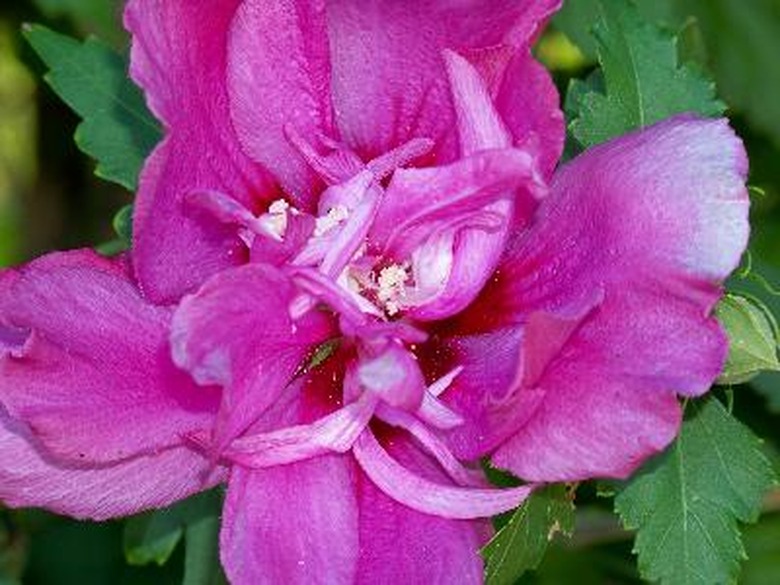What To Do If A Rose Of Sharon Is Not Blooming
Rose of Sharon (Hibiscus syriacus, USDA zones 5-9) is a flowering shrub that grows in urban gardens. It can reach a full height of 12 feet with a spread of 10 feet. An erect, deciduous shrub often referred to as althea or hardy hibiscus, rose of Sharon has cup-shaped flowers that bloom during late summer to fall. The flowers come in shades of blue, pink, red, purple, white and lavender. Learning the proper ways to care for the rose of Sharon will ensure that it blooms profusely.
Tip
If your rose of Sharon isn't blooming, focus on providing proper care to encourage healthy growth and manage pests that can hurt the flowers.
Benefits of Rose of Sharon
Benefits of Rose of Sharon
This flowering shrub can grow well in average soil, as long as the area receives lots of sunlight, which gives you flexibility in where you plant it. The rose of Sharon requires very little maintenance and blooms profusely in summer, so you can enjoy the flowers with little work. Unlike evergreen shrubs, the rose of Sharon loses its leaves late in fall.
Keep Rose of Sharon Healthy
Keep Rose of Sharon Healthy
The rose of Sharon needs moist and well-drained soil to grow well. Plant it in the spring or fall for best results. Apply a layer of compost around the plant in spring, extending to the drip line of the outermost branches of the shrub.
To enhance blooming and promote larger blossoms, prune the shrub each spring, retaining only two to three buds on each branch. Remove dead, diseased and damaged branches constantly to help the blooms flourish and keep the plant healthy overall. Prune away up to one-third of the oldest branches to rejuvenate the rose of Sharon. Look for thicker stems, cutting those branches at the base.
Elusive Rose of Sharon Blooms
Elusive Rose of Sharon Blooms
Sometimes the rose of Sharon buds fall off prematurely, which prevents the flowers from blooming. This can be a result of inconsistent watering or inadequate phosphorus. Over-watering tends to saturate the roots, making it difficult for the plant to absorb soil nutrients. Maintain a water level of 1 to 1-1/2 inches per week during the growing season. Check the soil, as areas with too much clay have poor drainage.
Apply a water-soluble fertilizer containing high phosphorous and low nitrogen every two weeks, according to soil-test recommendations. With a supply of the proper kind of phosphorus, rose of Sharon will bloom profusely in no time.
Pest Infestation Management
Pest Infestation Management
Infestations may prevent the rose of Sharon from producing any blooms or can cause the blooms you have to disappear. Its colorful flowers are attractive and inviting to insects and birds. The Japanese beetle, for example, loves to eat flowers, including those of the rose of Sharon. If you did have blooms on the shrub but no longer have them, look for the shiny metallic green and copper bugs on your plants.
If handpicking beetles isn't your cup of tea, you can use a pyrethroid insecticide to control these pests. Following all label recommendations for application as well as cautions to protect beneficial pollinators. Aside from organic spray, nature's own defense, the ladybug and other beneficial insects, naturally get rid of aphids.
